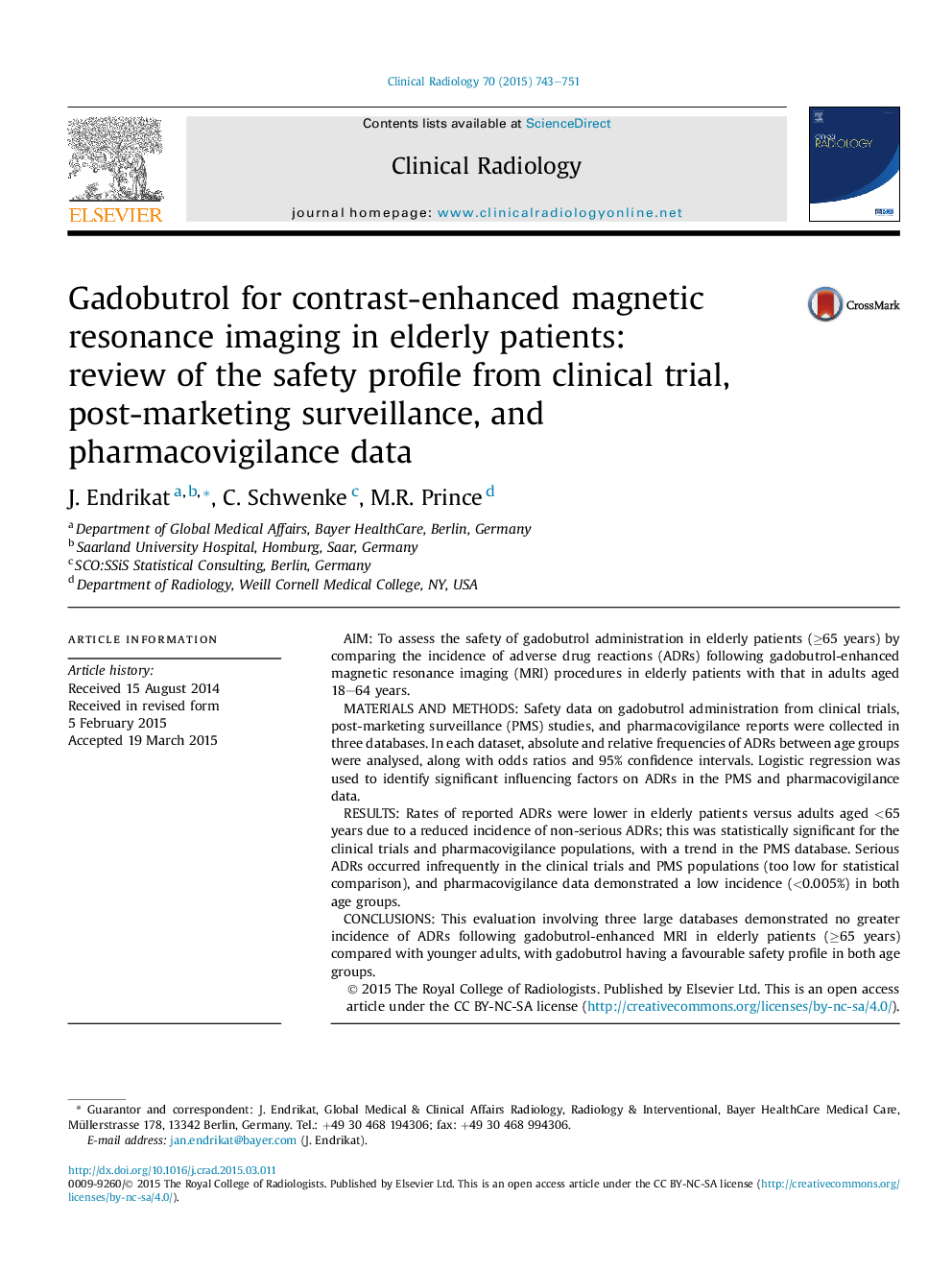| Article ID | Journal | Published Year | Pages | File Type |
|---|---|---|---|---|
| 6190846 | Clinical Radiology | 2015 | 9 Pages |
â¢First dedicated safety study of an extracellular contrast agent in the elderly.â¢Elderly patients experience fewer non-serious ADRs than younger adults.â¢Gadobutrol has a favourable safety profile in both age groups.
AimTo assess the safety of gadobutrol administration in elderly patients (â¥65 years) by comparing the incidence of adverse drug reactions (ADRs) following gadobutrol-enhanced magnetic resonance imaging (MRI) procedures in elderly patients with that in adults aged 18-64 years.Materials and methodsSafety data on gadobutrol administration from clinical trials, post-marketing surveillance (PMS) studies, and pharmacovigilance reports were collected in three databases. In each dataset, absolute and relative frequencies of ADRs between age groups were analysed, along with odds ratios and 95% confidence intervals. Logistic regression was used to identify significant influencing factors on ADRs in the PMS and pharmacovigilance data.ResultsRates of reported ADRs were lower in elderly patients versus adults aged <65 years due to a reduced incidence of non-serious ADRs; this was statistically significant for the clinical trials and pharmacovigilance populations, with a trend in the PMS database. Serious ADRs occurred infrequently in the clinical trials and PMS populations (too low for statistical comparison), and pharmacovigilance data demonstrated a low incidence (<0.005%) in both age groups.ConclusionsThis evaluation involving three large databases demonstrated no greater incidence of ADRs following gadobutrol-enhanced MRI in elderly patients (â¥65 years) compared with younger adults, with gadobutrol having a favourable safety profile in both age groups.
